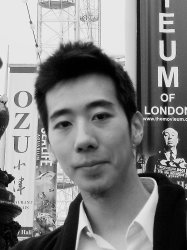Publications
7 results found
Ko DD, Lin H-T, 2019, The Role of Head Roll during Dragonfly Visual Guidance, Annual Meeting of the Society-for-Integrative-and-Comparative-Biology (SICB), Publisher: OXFORD UNIV PRESS INC, Pages: E350-E350, ISSN: 1540-7063
Fabian JM, Maeda M, Siwanowicz I, et al., 2019, Toward the Neural Representation of Aeroelasticity in Insect Wings, Annual Meeting of the Society-for-Integrative-and-Comparative-Biology (SICB), Publisher: OXFORD UNIV PRESS INC, Pages: E310-E310, ISSN: 1540-7063
Lin H-T, Leonardo A, 2017, Heuristic Rules Underlying Dragonfly Prey Selection and Interception, Current Biology, Vol: 27, Pages: 1124-1137, ISSN: 0960-9822
Ros IG, Bhagavatula PS, Lin H-T, et al., 2017, Rules to fly by: pigeons navigating horizontal obstacles limit steering by selecting gaps most aligned to their flight direction, Interface Focus, Vol: 7, Pages: 20160093-20160093, ISSN: 2042-8898
Bomphrey RJ, Nakata T, Henningsson P, et al., 2016, Flight of the dragonflies and damselflies, Philosophical Transactions of the Royal Society B: Biological Sciences, Vol: 371, Pages: 20150389-20150389, ISSN: 0962-8436
Mischiati M, Lin H-T, Herold P, et al., 2015, Internal models direct dragonfly interception steering, Nature, Vol: 517, Pages: 333-338, ISSN: 0028-0836
Sensorimotor control in vertebrates relies on internal models. When extending an arm to reach for an object, the brain uses predictive models of both limb dynamics and target properties. Whether invertebrates use such models remains unclear. Here we examine to what extent prey interception by dragonflies (Plathemis lydia), a behaviour analogous to targeted reaching, requires internal models. By simultaneously tracking the position and orientation of a dragonfly’s head and body during flight, we provide evidence that interception steering is driven by forward and inverse models of dragonfly body dynamics and by models of prey motion. Predictive rotations of the dragonfly’s head continuously track the prey’s angular position. The head–body angles established by prey tracking appear to guide systematic rotations of the dragonfly’s body to align it with the prey’s flight path. Model-driven control thus underlies the bulk of interception steering manoeuvres, while vision is used for reactions to unexpected prey movements. These findings illuminate the computational sophistication with which insects construct behaviour.
Lin H-T, Ros IG, Biewener AA, 2014, Through the eyes of a bird: modelling visually guided obstacle flight, Journal of the Royal Society Interface, Vol: 11, Pages: 1-12, ISSN: 1742-5662
Various flight navigation strategies for birds have been identified at the large spatial scales of migratory and homing behaviours. However, relatively little is known about close-range obstacle negotiation through cluttered environments. To examine obstacle flight guidance, we tracked pigeons (Columba livia) flying through an artificial forest of vertical poles. Interestingly, pigeons adjusted their flight path only approximately 1.5 m from the forest entry, suggesting a reactive mode of path planning. Combining flight trajectories with obstacle pole positions, we reconstructed the visual experience of the pigeons throughout obstacle flights. Assuming proportional–derivative control with a constant delay, we searched the relevant parameter space of steering gains and visuomotor delays that best explained the observed steering. We found that a pigeon's steering resembles proportional control driven by the error angle between the flight direction and the desired opening, or gap, between obstacles. Using this pigeon steering controller, we simulated obstacle flights and showed that pigeons do not simply steer to the nearest opening in the direction of flight or destination. Pigeons bias their flight direction towards larger visual gaps when making fast steering decisions. The proposed behavioural modelling method converts the obstacle avoidance behaviour into a (piecewise) target-aiming behaviour, which is better defined and understood. This study demonstrates how such an approach decomposes open-loop free-flight behaviours into components that can be independently evaluated.
This data is extracted from the Web of Science and reproduced under a licence from Thomson Reuters. You may not copy or re-distribute this data in whole or in part without the written consent of the Science business of Thomson Reuters.

